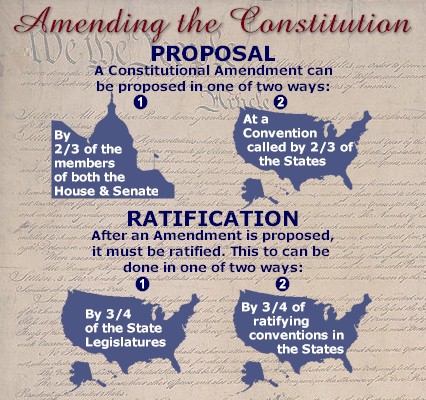
#1 The Amendment Process

The authority to amend the Constitution of the United States is derived from Article V of the Constitution. The process in represented in the graphic above.
CASE STUDY: Inclusion of the Bill of Rights ( our first 10 Amendments)
DISPUTE: Those favoring a strong national government felt the original Constitution provided enough protection of individual rights. Anti-Federalists refused to vote for the Constitution without this written guarantee.
TERMS OF COMPROMISE: The first ten Amendments of the Constitution were added to guarantee individual rights. These amendments, called the Bill of Rights, include such rights as freedom of speech, press, religion, and assembly, the right to bear arms, no cruel and unusual punishment, and rights of those accused of a crime.
#2 The Elastic Clause
The Elastic Clause - CASE STUDY Hamilton's Bank proposal!!!!
Those Americans believing in loose construction or interpretation of the Constitution feel the federal government should be able to exercise powers not expressly given to it in the Constitution. This increase in federal powers would allow the federal government to become more powerful over time. The legal basis for this argument is found in Article I, Section 8, Clause 18 of the Constitution. This clause is commonly referred to as the Elastic Clause.
# 3 Judicial Review
The most important power of the Supreme Court, that of Judicial Review or the ability to declare laws unconstitutional, is not in the Constitution. The power of Judicial Review was a precedent set in the 1803 Marbury v. Madison decision. Regardless, it has become one of the most fundamental concepts in American government. It also serves a check and balance on the laws passed by Congress and the actions and treaties of the President.
Comments (0)
You don't have permission to comment on this page.